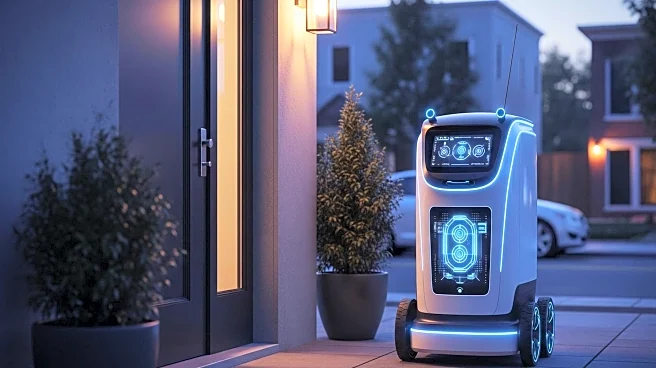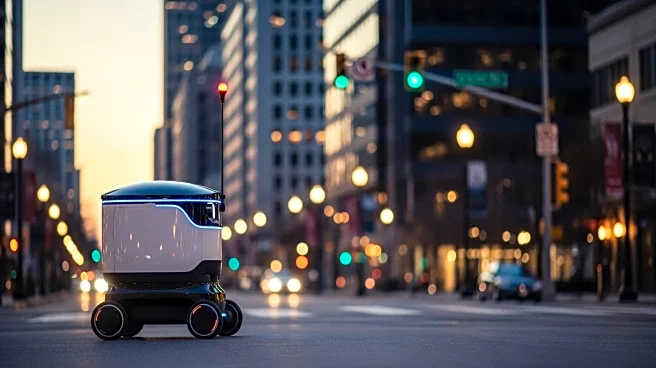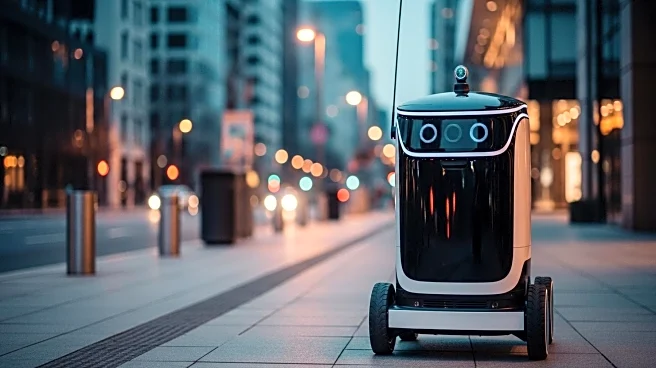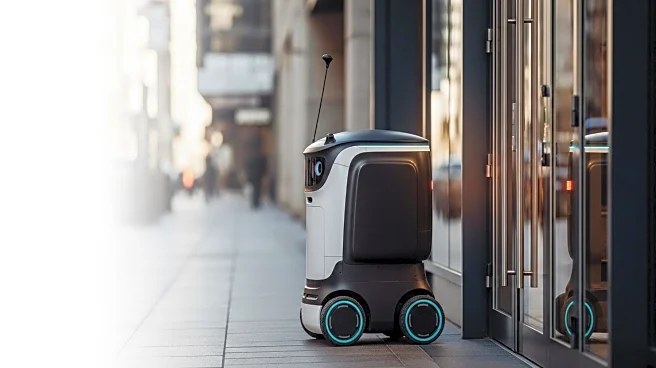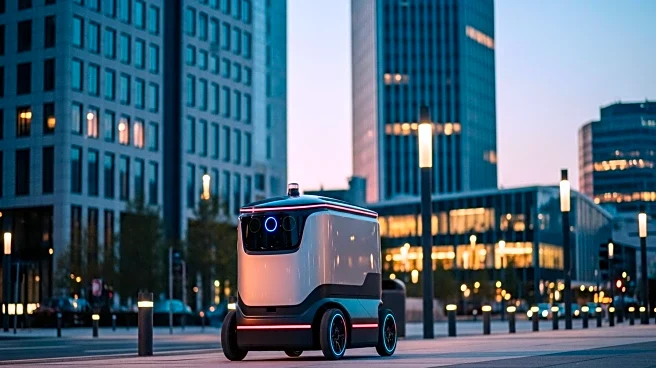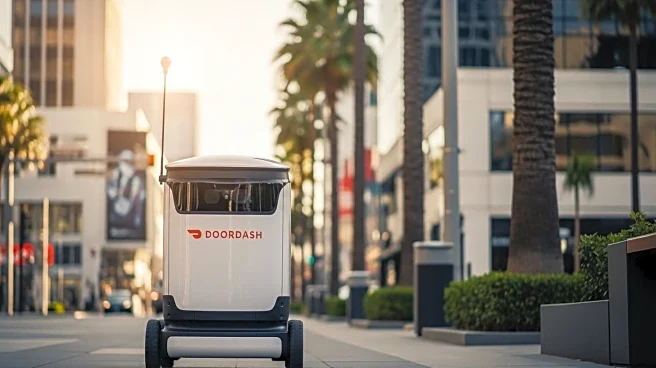What is the story about?
What's Happening?
DoorDash Inc. has announced a partnership with Serve Robotics Inc., a developer of sidewalk robots, to expand autonomous delivery services across the United States. This collaboration will begin in Los Angeles and aims to complement DoorDash's existing delivery methods, which include human couriers. Serve Robotics, which also partners with Uber Technologies Inc., has already completed tens of thousands of deliveries in cities such as Los Angeles, Miami, Dallas, Chicago, and Atlanta. The partnership is non-exclusive, allowing Serve to optimize its robots' time by taking orders from both DoorDash and Uber. This strategy is similar to how delivery workers use multiple apps to find better-paying or nearby gigs. Serve's robots are designed for short-distance deliveries, averaging less than a mile and taking about 18 minutes from pickup to drop-off.
Why It's Important?
The partnership between DoorDash and Serve Robotics signifies a growing trend in the delivery industry towards automation and efficiency. By integrating autonomous robots, DoorDash can potentially reduce operational costs and increase delivery speed, especially for smaller, short-distance orders in urban areas. This move could enhance DoorDash's competitive edge in the food delivery market, which is increasingly adopting technology-driven solutions. Serve Robotics, benefiting from partnerships with major platforms like DoorDash and Uber, can increase its fleet utilization and reduce deadhead miles, thereby improving its financial performance. The expansion of autonomous delivery services could also lead to broader applications beyond food delivery, such as transporting groceries or medication, which may further transform logistics and consumer convenience.
What's Next?
Serve Robotics plans to double its fleet to 2,000 robots by the end of the year, leveraging partnerships with multiple delivery apps to maximize its investment. DoorDash continues to explore various autonomous delivery methods, including drone deliveries with Flytrex Inc. and Alphabet Inc.'s Wing. These initiatives indicate a strategic focus on expanding delivery capabilities and efficiency. As the technology matures, stakeholders in the delivery industry may see increased adoption of autonomous solutions, potentially leading to shifts in employment patterns for human couriers and changes in urban infrastructure to accommodate robotic deliveries.
Beyond the Headlines
The integration of autonomous delivery robots raises ethical and regulatory considerations, such as pedestrian safety and the impact on employment for traditional delivery workers. As these technologies become more prevalent, there may be discussions around the legal frameworks governing their operation in public spaces. Additionally, the environmental impact of increased robotic deliveries, including energy consumption and waste management, could become a topic of interest for policymakers and environmental groups.
AI Generated Content
Do you find this article useful?
